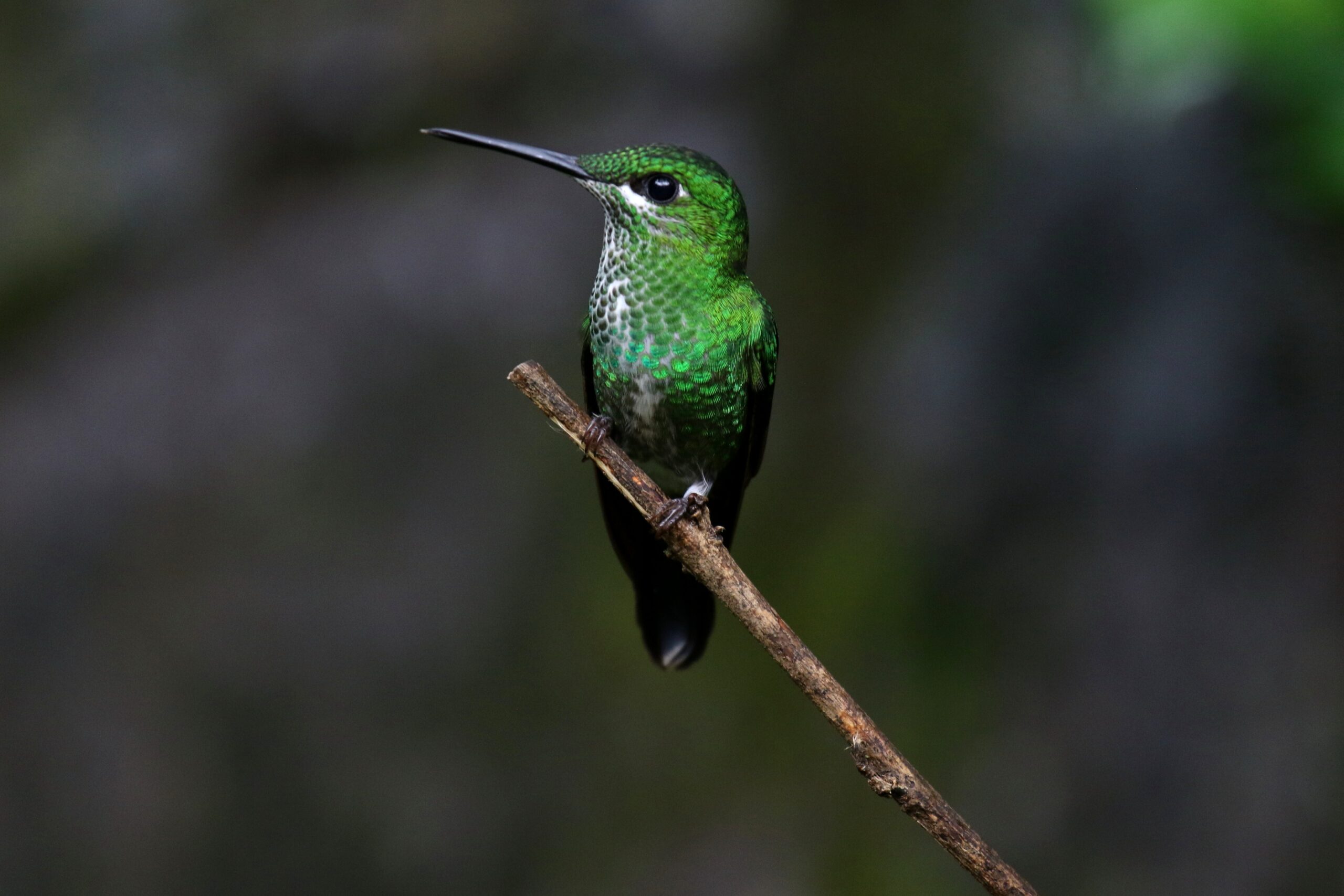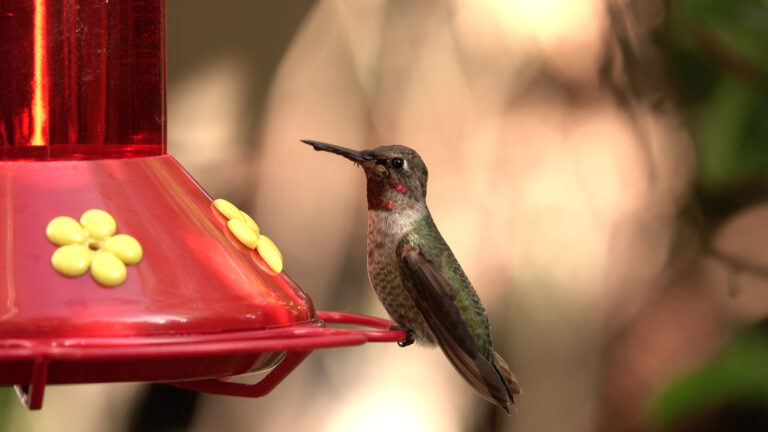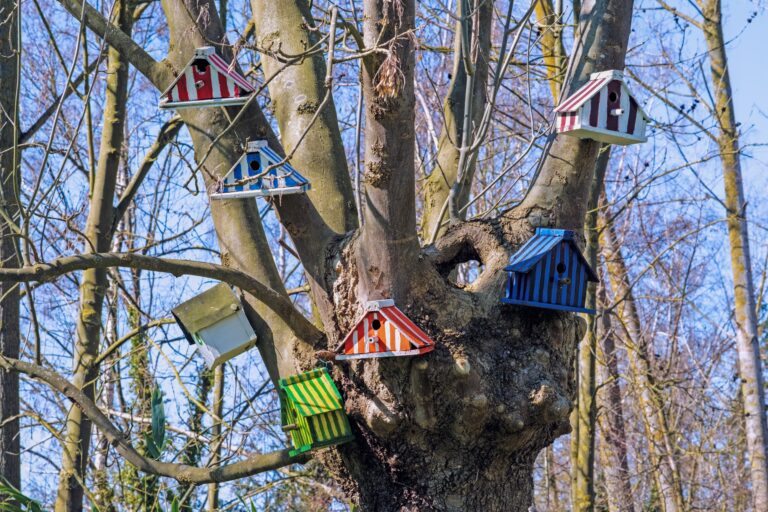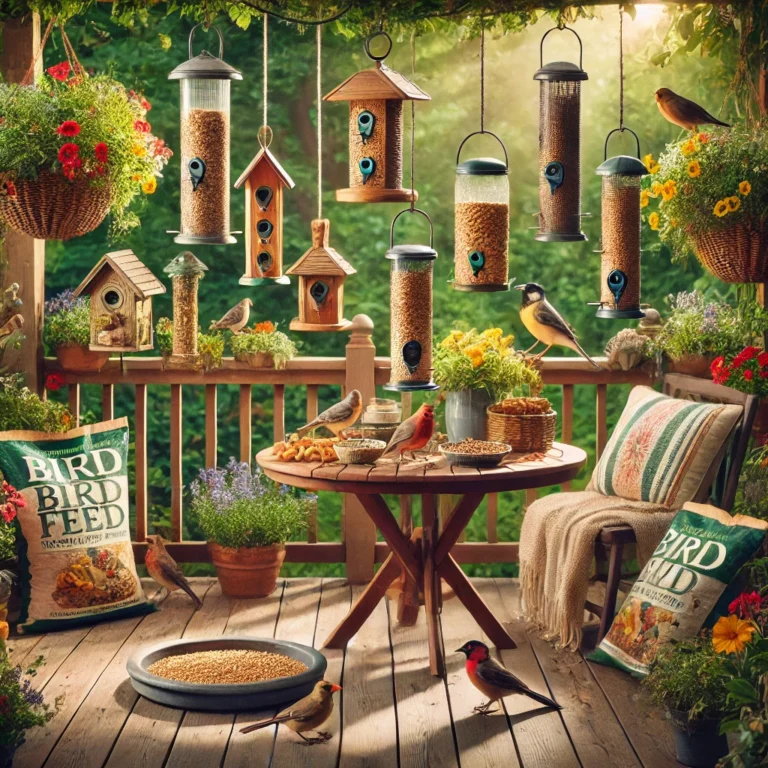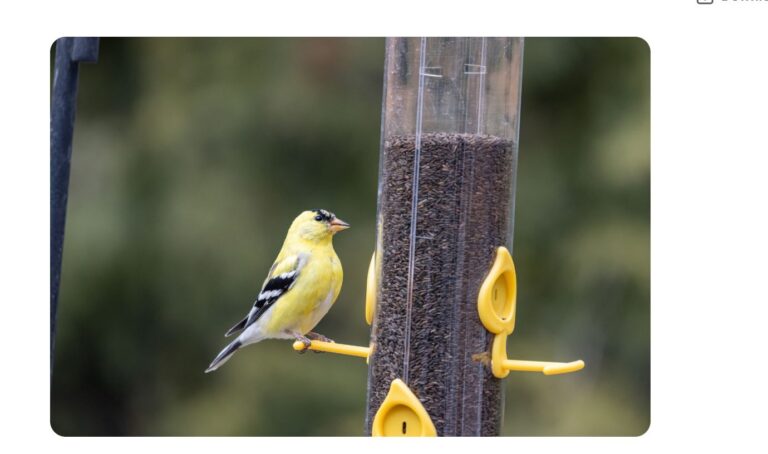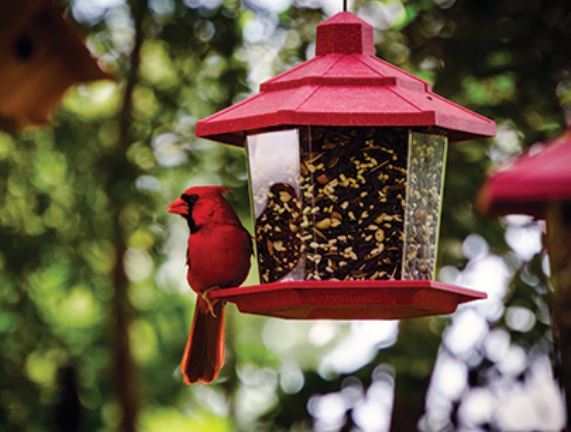5 Best Bird-Safe Hummingbird Nectar Feeders (No Dye) for Your Garden in 2025
Years ago, I filled my USA backyard feeder with red-dyed nectar, thinking it attracted hummingbirds.
After noticing fewer birds and learning about red dye toxicity, I switched to dye-free nectar and naturally red feeders, transforming my birdwatching experience.
Concerns about red dye harming hummingbirds, like potential liver damage, pushed me to prioritize their safety.
Many share these worries, seeking safer options. My feeder now buzzes with healthy hummingbirds, and I’m excited to share dye-free, bird-safe feeder picks.
Join me to explore top choices that keep hummingbirds thriving.
Why Dye-Free Nectar Feeders Matter
Red dye in nectar raises serious risks for hummingbirds. Studies, like those from the Audubon Society, suggest artificial dyes may cause liver damage and shorten lifespans.
Dye-free nectar with naturally red-colored feeders is a safer choice. Clear nectar avoids health risks while vibrant feeder designs attract hummingbirds effectively.
What to Look for in a Bird-Safe Hummingbird Feeder
BPA-Free, Food-Safe Materials
Choose BPA-free plastic or glass feeders. These materials prevent chemical leaching, ensuring nectar stays safe for hummingbirds.
Easy-to-Clean Design
Select wide-mouth, detachable feeders to simplify cleaning. This prevents mold, keeping nectar fresh and birds healthy.
Bee Guards and Ant Moats
Opt for feeders with bee guards and ant moats. These features protect nectar, ensuring hummingbirds feed without pest interference.
UV-Resistant Parts
Pick feeders with UV-resistant plastic or glass. They withstand USA’s harsh sunlight, lasting longer without degrading.
Size Based on Bird Traffic
Choose a feeder size matching your yard’s hummingbird visits. Small 8–12-ounce feeders suit a few birds; 32-ounce models handle flocks.
I’ve shared my journey to dye-free feeders for healthier hummingbirds. What’s your experience? Comment below to discuss safe feeder tips!
Top 5 Bird-Safe Hummingbird Feeders (No Dye) – 2025 Picks
My backyard in the USA buzzes with hummingbirds, but I learned the hard way that red-dyed nectar can harm them.
Studies, like those from the Audubon Society, link artificial dyes to liver damage and shorter lifespans in hummingbirds.
After switching to dye-free nectar and feeders with naturally red parts, my garden became a safe haven for these vibrant birds.
Below, I share my top five bird-safe, dye-free hummingbird feeders for 2025, each designed for easy cleaning, pest protection, and bird health.
These feeders use BPA-free materials, ant moats, and bee guards to ensure nectar stays pure. Perfect for beginners, seniors, or busy gardeners, they’re available on Amazon.
Let’s explore these top picks to keep your hummingbirds thriving.
1. Aspects HummZinger HighView Hummingbird Feeder
This saucer-style feeder transformed my birdwatching experience. Its bright red top attracts hummingbirds without needing toxic red dye, ensuring their safety.
The 12-ounce capacity suits small to medium yards, and the high perch lets me watch birds clearly. Made of BPA-free, UV-resistant polycarbonate, it withstands harsh USA weather. The built-in ant moat and raised feeding ports block bees, keeping nectar clean.
Cleaning is simple: the two-part base snaps apart, and I scrub it with a Droll Yankees HummerPlus Brush every 3–4 days. It’s lightweight at 1.2 pounds, perfect for hanging in tight spaces like balconies. The design prevents leaks, so my patio stays mess-free.
This feeder is a favorite for its simplicity and bird-safe features, making it ideal for anyone starting out or seeking low-maintenance birdwatching.
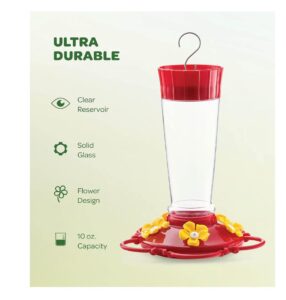
| Pros | Cons |
|---|---|
| Simple saucer design prevents leaks | 12-ounce capacity needs frequent refills |
| Built-in ant moat deters pests | Plastic may cloud over time |
| High perch offers clear bird views | No suction mount for windows |
| Easy to clean with snap-apart base |
Cleaning & Maintenance Ease
The two-part saucer design disassembles in seconds. I rinse it with warm water and scrub ports with a brush, keeping it mold-free in under 5 minutes.
Why It’s Dye-Free & Bird-Safe
The bright red top eliminates the need for harmful dyed nectar. BPA-free materials ensure no chemical leaching, and the ant moat with raised ports prevents pest contamination, keeping nectar safe for hummingbirds.
Customer Review Highlights
- “Cleaning is so easy, and the hummingbirds love it! The ant moat works perfectly.” – Jane, 2024
- “Great perch for watching birds. No dye needed, and they visit daily!” – Mark, 2025
This feeder is perfect for seniors or beginners due to its lightweight design and easy disassembly. Busy gardeners appreciate the quick cleaning and pest protection, making it a top 2025 choice. Check latest price on Amazon.
2. More Birds Bird Health Ruby Glass Hummingbird Feeder
This elegant glass feeder adds charm to my garden while prioritizing bird safety. Its red top and flower ports attract hummingbirds naturally, avoiding harmful dyes.
The 10-ounce capacity fits smaller yards, and the wide-mouth bottle simplifies filling without spills. Made with food-safe glass and BPA-free plastic, it ensures nectar purity. Bee guards and an ant moat protect against pests, and the circular perch offers birds a comfortable spot.
I clean it every 3 days using an Oxo Good Grips Bottle Brush, and the detachable base makes scrubbing easy.
Weighing 1.5 pounds, it’s sturdy yet manageable. The UV-resistant glass holds up in sunny USA climates, ensuring durability. This feeder balances style and function, perfect for bird lovers who want a safe, attractive option.
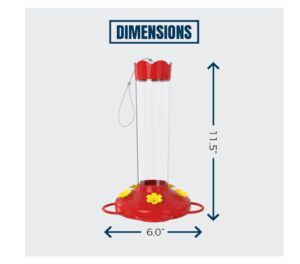
| Pros | Cons |
|---|---|
| Elegant glass bottle resists UV damage | 10-ounce capacity requires frequent refills |
| Bee guards and ant moat protect nectar | Glass may break if dropped |
| Wide-mouth design simplifies filling | Cleaning requires bottle brush |
Cleaning & Maintenance Ease
The wide-mouth bottle and detachable base make cleaning quick. I scrub with a brush and rinse thoroughly, keeping it hygienic in about 7 minutes.
Why It’s Dye-Free & Bird-Safe
The red top and ports draw hummingbirds without dyed nectar. Food-safe glass and BPA-free plastic prevent contamination, while bee guards and an ant moat ensure nectar stays clean.
Customer Review Highlights
- “Hummingbirds flock to it! The glass is sturdy, and cleaning is simple.” – Sarah, 2024
- “No leaks, and the ant moat works great. Safe for birds with no dye.” – Tom, 2025
First-timers and seniors love this feeder’s easy-fill design and lightweight build. Busy gardeners value its pest protection and quick maintenance for a safe 2025 setup. Check latest price on Amazon.
3. First Nature 3055 Hummingbird Feeder
This feeder is a workhorse in my busy USA yard. Its bright red base attracts hummingbirds without relying on harmful dyes, ensuring their health. The 32-ounce capacity supports multiple birds, reducing refill frequency.
Made of BPA-free polymer plastic, it’s lightweight at 0.8 pounds and durable for outdoor use. The 10 oval feeding ports prevent bill injuries, and the wide-mouth reservoir simplifies filling.
I clean it every 4 days by twisting apart the two-part base and scrubbing with a bottle brush. While it lacks an ant moat, a separate one can is used.
This budget-friendly feeder is perfect for active yards with lots of hummingbird visitors, offering safety and convenience.

| Pros | Cons |
|---|---|
| Large 32-ounce capacity reduces refills | No built-in ant moat |
| 10 feeding ports support multiple birds | Plastic may absorb nectar over time |
| Budget-friendly and durable plastic | Less attractive than glass |
Cleaning & Maintenance Ease
The wide-mouth reservoir and twist-apart base make cleaning easy. I scrub it with a brush every 4 days, keeping it mold-free in under 6 minutes.
Why It’s Dye-Free & Bird-Safe
The red base eliminates the need for toxic dyed nectar. BPA-free plastic ensures safe nectar storage, and oval ports protect bird bills, enhancing safety.
Customer Review Highlights
- “Holds so much nectar, and the birds love it! Easy to clean, no dye.” – Lisa, 2024
- “Perfect for my busy yard. Large size and safe for birds.” – John, 2025
Busy birders with active yards love the large capacity and simple cleaning. Beginners find the design intuitive, ensuring safe, dye-free feeding in 2025.
4. Perky-Pet Top-Fill Pinch-Waist Glass Hummingbird Feeder
This glass feeder adds vintage style to my patio while keeping hummingbirds safe. Its red bottle and ports attract birds without dyed nectar, avoiding health risks.
The 8-ounce capacity suits smaller yards, and the wide-mouth top prevents spills during filling. Made with food-safe glass and BPA-free plastic, it ensures nectar purity.
The ant moat doubles as a waterer for other birds, and bee guards protect feeding ports. I clean it weekly by soaking in a 1:4 vinegar-water solution and scrubbing with a brush.
Weighing 1.4 pounds, it’s sturdy yet easy to handle. UV-resistant glass withstands USA weather, making it a durable, bird-safe choice for stylish gardens.
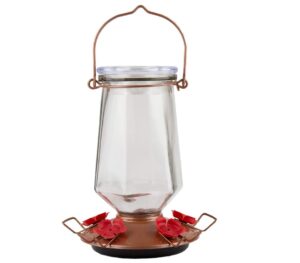
| Pros | Cons |
|---|---|
| Stylish glass bottle enhances decor | 8-ounce capacity needs frequent refills |
| Ant moat doubles as bird waterer | Glass may break if dropped |
| Wide-mouth top prevents spills | Assembly can be tricky |
Cleaning & Maintenance Ease
The detachable tray and wide-mouth bottle clean easily with a brush and vinegar soak. I keep it pristine in under 10 minutes weekly.
Why It’s Dye-Free & Bird-Safe
The red glass bottle attracts hummingbirds without dyes. Food-safe materials and pest protections like ant moats and bee guards ensure safe, clean nectar.
Customer Review Highlights
- “Gorgeous and easy to clean! The ant moat is perfect for safe feeding.” – Emily, 2024
- “Hummingbirds love the red glass. No dye, and it’s very sturdy.” – David, 2025
Seniors and design-focused birders appreciate the stylish look and easy upkeep. The ant moat ensures dye-free, safe feeding for 2025.
5. Sewanta Hummingbird Feeder
This feeder is a practical gem for my small USA balcony. Its red top and five ports attract hummingbirds without needing harmful dyes.
The 16-ounce capacity balances convenience and frequent refills, ideal for moderate bird traffic.
Made of BPA-free, shatterproof plastic, it’s lightweight at 0.6 pounds and durable. The ant guard keeps nectar clean, though bee guards are absent.
I clean it every 3 days, using a dishwasher or hand-washing with a bottle brush.
The wide-mouth reservoir simplifies filling, and UV-resistant plastic holds up in sunlight. This affordable feeder is perfect for small spaces and easy, safe birdwatching.
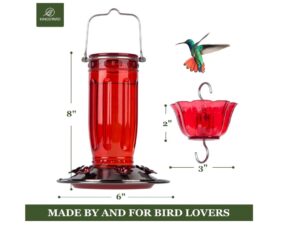
| Pros | Cons |
|---|---|
| Lightweight, shatterproof plastic | No bee guards included |
| 16-ounce capacity balances refills | Plastic may fade in intense sunlight |
| Dishwasher-safe parts save time | Less durable than glass |
Cleaning & Maintenance Ease
The detachable base and wide-mouth reservoir are dishwasher-safe or hand-wash easily. I clean it in 5 minutes with a brush, ensuring no mold.
Why It’s Dye-Free & Bird-Safe
The red top eliminates the need for dyed nectar. BPA-free plastic and an ant guard ensure safe, clean feeding for hummingbirds.
Customer Review Highlights
- “So easy to clean, and the birds love it! No dye, just clear nectar.” – Rachel, 2024
- “Great for my patio. The ant guard works, and it’s safe for birds.” – Mike, 2025
First-timers and small-space birders love the lightweight, easy-to-clean design. Its dye-free, pest-protected setup ensures safe feeding in 2025. Check latest price on Amazon.
Why These Feeders Shine
These dye-free feeders make my backyard a safe hummingbird paradise. Avoiding red dye, linked to liver damage and shorter lifespans, is critical for bird health.
I use a 1:4 sugar-water nectar recipe, boiled and cooled, to mimic natural flower nectar safely. Each feeder uses BPA-free materials to prevent chemical leaching, and features like ant moats and bee guards keep nectar pure.
Wide-mouth designs and detachable parts make cleaning simple, preventing mold that could harm birds.
Capacities range from 8 to 32 ounces, fitting quiet patios to bustling gardens. UV-resistant materials ensure durability in USA climates.
Perfect for beginners, seniors, or busy gardeners, these feeders offer safe, low-maintenance birdwatching.
Share your feeder tips below, and let’s keep hummingbirds healthy! Check these on Amazon for the latest prices and reviews to start your 2025 birdwatching adventure.
How to Make Your Own Safe Hummingbird Nectar
Making Safe Hummingbird Nectar
I’ve been feeding hummingbirds in my USA backyard for years, and making safe nectar is simple yet critical. Using the wrong ingredients can harm these delicate birds, so I stick to a proven recipe and safety practices.
4:1 Water-to-Sugar Recipe
Mix one part white granulated sugar with four parts water. Boil the mixture for 1–2 minutes, then cool it completely before filling your feeder.
Never use red dye, honey, or artificial sweeteners. These can cause liver damage or digestive issues in hummingbirds, as noted by the Audubon Society.
Steps to Prepare Nectar
Measure 1 cup sugar and 4 cups water. Combine in a saucepan, boil briefly, and stir until sugar dissolves.
Cool the nectar to room temperature. Store extra in a glass container in the fridge for up to one week.
Why This Recipe Works
The 4:1 ratio mimics natural flower nectar, providing safe energy for hummingbirds. Boiling kills bacteria, ensuring freshness.
I avoid dyes because they’re unnecessary—red feeder parts attract birds effectively. Honey ferments, and sweeteners lack nutritional value.
How Long Homemade Nectar Lasts (Safety Tips)
Homemade nectar lasts up to 7 days in the refrigerator. Always store in a clean, airtight glass container to prevent contamination.
In feeders, replace nectar every 1–3 days in summer heat to avoid spoilage. Check for cloudiness or odor before refilling.
Discard any nectar showing signs of fermentation or mold. Clean the feeder thoroughly before adding fresh nectar.
Use small batches to minimize waste. I make just enough for my feeder’s 12-ounce capacity to keep it fresh.
Placement and Maintenance Tips
Where to Hang Feeders for Safety & Visibility
Hang feeders in shaded areas to slow nectar spoilage. I place mine near flowers, 5–6 feet high, for easy hummingbird access.
Ensure feeders are away from windows to prevent collisions. A spot visible from your patio enhances birdwatching enjoyment.
How Often to Change Nectar (Especially in Summer)
Change nectar every 1–3 days in summer, especially in warm USA climates. Heat speeds up fermentation, making nectar unsafe.
In cooler weather, replace every 4–5 days. I check daily to ensure nectar stays clear and fresh.
Signs of Spoiled Nectar or Feeder Mold
Look for cloudy nectar or a sour smell, indicating spoilage. Discard immediately and clean the feeder.
Check for black or green mold in ports or the reservoir. Scrub with a 1:4 vinegar-water solution and rinse thoroughly.
Why This Matters
Making safe nectar and maintaining feeders properly keeps hummingbirds healthy and your USA yard buzzing.
I’ve seen more birds visit since switching to this dye-free recipe and routine cleaning.
Try the Aspects HummZinger HighView Feeder for easy maintenance and safe feeding. Check prices on Amazon. Share your nectar tips below!
How to Make Your Own Safe Hummingbird Nectar
Making Safe Hummingbird Nectar
I’ve fed hummingbirds in my USA backyard for years, and a safe nectar recipe keeps them thriving. Using harmful ingredients risks their health, so I follow a simple, proven method.
4:1 Water-to-Sugar Recipe
Mix one part white granulated sugar with four parts water. Boil for 1–2 minutes, stir until dissolved, then cool completely.
Avoid red dye, honey, or artificial sweeteners. These can cause liver damage or digestive issues, per Audubon Society findings.
Steps to Prepare Nectar
Combine 1 cup sugar and 4 cups water in a saucepan. Boil briefly, stir, and cool to room temperature.
Store extra nectar in a clean glass container. Refrigerate for up to seven days to maintain freshness.
Why This Recipe Works
The 4:1 ratio mimics natural flower nectar, providing safe energy. Boiling ensures sterility, preventing bacterial growth.
Red dye is unnecessary—feeder red parts attract birds. Honey ferments, and sweeteners offer no nutrition.
How Long Homemade Nectar Lasts (Safety Tips)
Refrigerated nectar stays fresh for 7 days in a glass container. Check for cloudiness before using.
Replace feeder nectar every 1–3 days in summer. Warm USA weather speeds spoilage, harming birds.
Discard nectar if it smells sour or looks cloudy. Clean the feeder thoroughly to prevent mold.
Make small batches to avoid waste. I prepare just enough for my 12-ounce feeder.
Placement and Maintenance Tips
Where to Hang Feeders for Safety & Visibility
Hang feeders in shaded spots to slow nectar spoilage. I place mine near flowers, 5–6 feet high, for bird access.
Keep feeders away from windows to avoid collisions. A visible spot from your patio boosts birdwatching joy.
How Often to Change Nectar (Especially in Summer)
Swap nectar every 1–3 days in summer heat. High temperatures in the USA cause rapid fermentation.
In cooler weather, change every 4–5 days. I check daily to keep nectar fresh and clear.
Signs of Spoiled Nectar or Feeder Mold
Cloudy nectar or a sour odor signals spoilage. Discard it immediately and clean the feeder.
Black or green mold in ports or reservoirs requires scrubbing. Use a 1:4 vinegar-water solution and rinse well.
Common Mistakes to Avoid
Buying Feeders with Painted Red Interiors
Avoid feeders with painted red interiors. Paint can chip, contaminating nectar and harming hummingbirds.
Choose feeders with naturally red, unpainted parts. I learned this after replacing a painted feeder.
Ignoring Cleaning Schedule
Skipping regular cleaning breeds mold and bacteria. This can sicken or deter hummingbirds from visiting.
Clean every 3–4 days in summer. My consistent schedule keeps my feeder safe and active.
Placing Near Pesticides or Open Sun All Day
Hanging feeders near pesticides risks poisoning birds. I keep mine far from treated plants or lawns.
Avoid full sun exposure all day. Shade prevents rapid nectar spoilage and maintains feeder durability.
FAQ Section
Do hummingbirds need red nectar?
No, hummingbirds don’t need red nectar. Bright red feeder parts attract them effectively without harmful dyes.
How often should I clean the feeder?
Clean every 3–4 days in summer, 4–5 days in cooler weather. Regular cleaning prevents mold and bacteria.
Can I use plastic feeders safely?
Yes, BPA-free plastic feeders are safe. Ensure they’re food-grade and cleaned regularly to avoid contamination.
Why are bees swarming my feeder?
Bees swarm if ports leak or lack guards. Use feeders with bee guards and check for tight seals.
Is it okay to leave nectar out overnight?
Leaving nectar overnight is fine in cool weather. In summer, replace daily to prevent spoilage.
Conclusion + Personal Recommendation
Making safe nectar and choosing bird-safe feeders transformed my USA backyard into a hummingbird haven. Skip red dye and opt for feeders with naturally red, BPA-free designs to ensure bird health.
My favorite for long-term use is the Aspects Humm Zinger High View Feeder for its easy cleaning and ant moat. Check prices on Amazon and share your hummingbird stories below!

